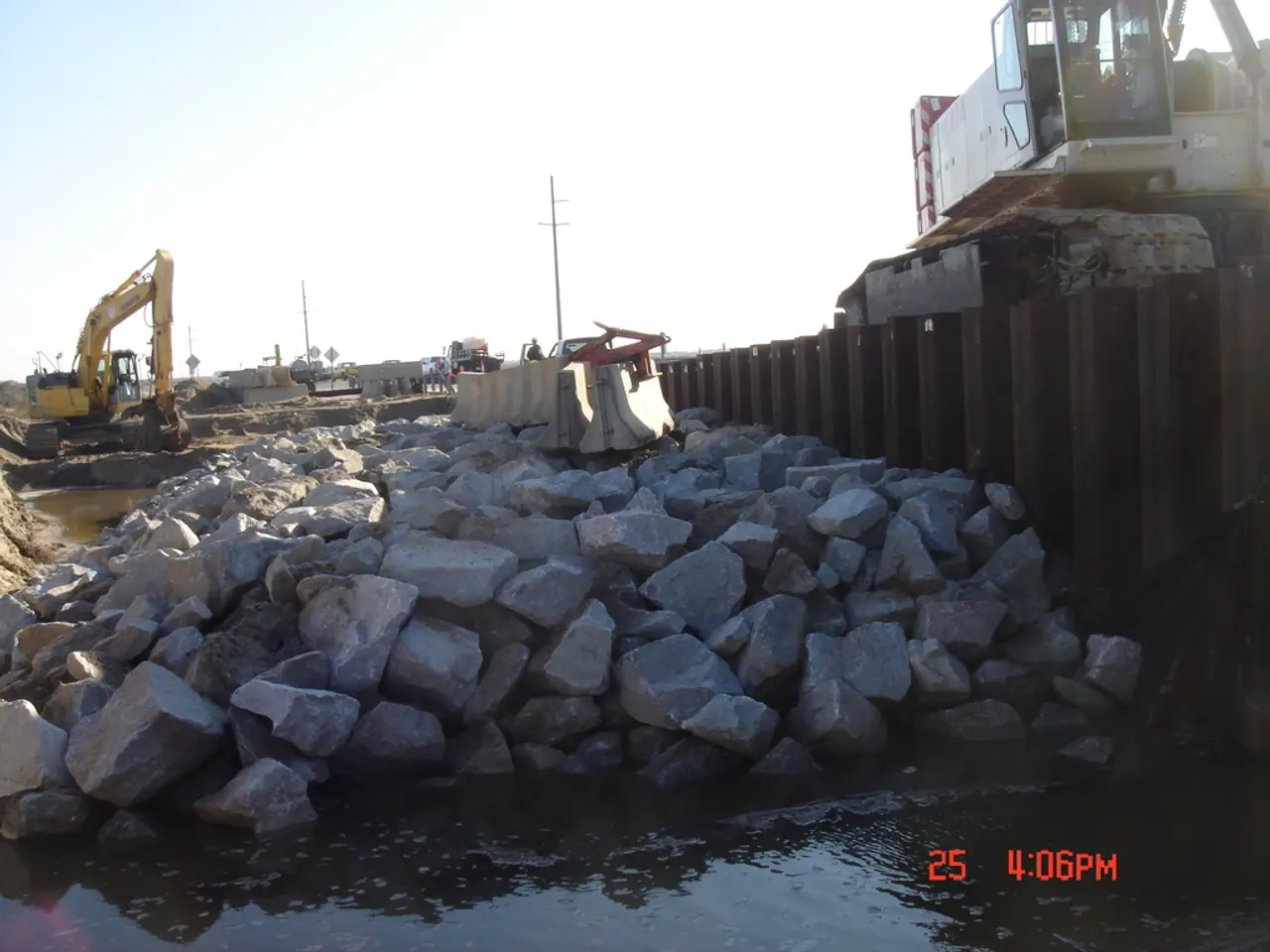Geothermal power expansion: Accelerating drilling process backed by insurance coverage - Improved Geothermal Drilling Speeds with Insurance Coverage for Potential Risks
The Federal Government of Germany has introduced a state-funded insurance scheme called "Feasibility Insurance" to alleviate financial risks associated with geothermal drilling projects. This initiative, a cooperation between the federal development bank KfW and reinsurer Munich Re, is part of a plan to accelerate geothermal energy development.
The insurance scheme, designed to cover part of the financial risk associated with unsuccessful geothermal drilling efforts by municipalities, is expected to last for three years, with nearly €50 million allocated in the federal budget to support around 65 projects. However, the cost of the insurance premiums remains undisclosed, a crucial factor in the practical implementation of the new system.
Before the first drilling reaches its target, a municipality can incur upfront costs of €20 to €30 million for a geothermal drilling project. Unsuccessful attempts can add further costs, such as €1.5 million to seal abandoned wells. The high costs, effort, and bureaucracy involved in geothermal drilling projects are significant hurdles that the new insurance scheme aims to address.
The preferred regions for geothermal energy projects in Germany are the Molasse Basin in Bavaria, the Upper Rhine Graben, and the North German Basin. Germany aims to increase the feed-in of heat from geothermal sources into district heating networks by a factor of ten by 2030, tapping into a geothermal potential of 10 terawatt-hours.
For electricity generation via geothermal energy, approximately 80 to 90 liters of flow per second with a water temperature of 110 degrees Celsius are required. For heat use, lower flow rates and water temperatures of 60 to 70 degrees Celsius are sufficient.
Diplomatic warnings have been issued about the insurance not becoming too expensive, as every new system will have to prove itself in practical implementation. The current federal budget draft for 2025 provides authorization commitments of around €50 million for the next four years for the geothermal insurance scheme.
Despite the lack of concretely published premium prices or total insurance cost projections over the next four years, the program is new, aiming to mitigate financial risks and encourage geothermal development. Parties interested should monitor updates from insurance providers like Munich Re and governmental announcements related to KfW-supported geothermal risk insurance schemes.
The Community policy, regarding the geothermal insurance scheme, is expected to stimulate vocational training in the renewable-energy sector, as it aims to alleviate financial risks associated with geothermal drilling projects. To achieve this goal, vocational training programs focused on the geothermal industry may have to be developed to meet the increasing demand for skilled workers. The insurance scheme may also facilitate the finance required by municipalities for geothermal energy projects, potentially contributing to the expansion of renewable energy in Germany.




